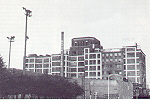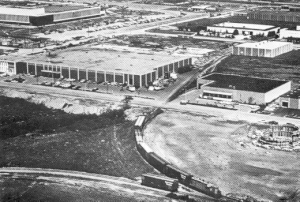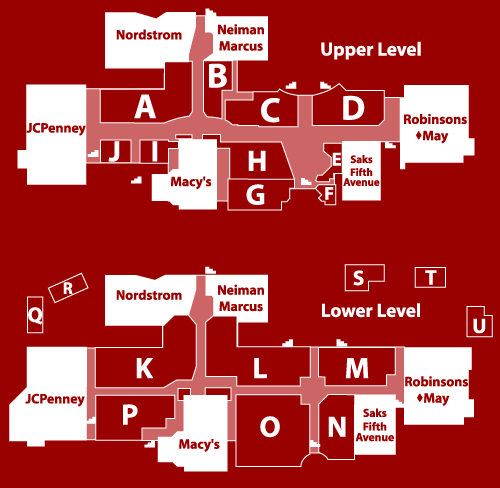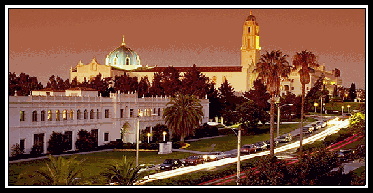D. Suburbanization and Modern
Cities
1. Suburbanization facts
| % in Central
Cities |
|
1948 |
|
1990 |
| Population |
|
64 |
|
39 |
| Manufacturing |
|
67 |
|
45 |
| Wholesale Trade |
|
92 |
|
49 |
| Retail Trade |
|
75 |
|
48 |
| Selected Services |
|
85 |
|
52 |

2. Suburbanization of
population
What caused the
suburbanization of population?
a. Increase in real income
- Has ambiguous effect -
pull toward CBD because of lower commuting
costs, pull toward suburbs because of lower
housing costs
b. Decrease in commuting
costs
- Due to streetcar,
automobiles
- Suburbs became
relatively more attractive
- Land along routes
became more attractive
.
.
.
.
.
.
.
c. Central city problems
(1) Old housing
- Newer housing
available in suburbs
(2) Race and income
- Escape racial
problems, avoid living near low-income
households
(3) Central-city fiscal
problems
- High taxes causes
flight to suburbs, weakening tax base,
leading to higher tax rates
(4) Crime
- High crime rates in
central cities
(5) Education
- Schools usually
better in suburbs
d. Following firms to the
suburbs
- Manufacturers,
retailers, and offices moving to suburbs
- Residential bid-rent
function has several peaks
3. Suburbanization of
manufacturing
What caused suburbanization
of manufacturing employment?
a. Intracity truck
- Trade-off between
locating close to CBD (lower transport
costs) and locating farther away (lower
labor costs)
- Intracity truck made
it less costly to transport finished
products
- Firms locate in
suburbs, with less costly labor
.
.
.
.
.
.
.
.
b. Intercity truck
- Long-distance travel
feasible
- Could compete with
rail and water, particularly for short
hauls
.
.
.
.
.
.
.
.
- Firms no longer tied
to central export node - could locate in
suburbs if access to highways available
- Interstate highway
system (authorized in 1956, mostly built
by late 1970s) made truck transport
easier
- Circumferential
highways (beltways):

Other examples: Dallas, Denver
- Manufacturers locate
near suburban beltways, bid rent
functions affected
.
.
.
.
.
.
.
c. Automobile
- Workers can reach
plants from anywhere in metropolitan area
.
.
.
.
.
.
d. Single-story plants
- Switched from
multistory plants on small lots to
single-story plants on big lots
 
- Wanted to exploit new
production technologies (assembly lines,
forklifts)
e. Suburban airports
- Air freight
increasingly important.
4. Suburbanization of office
employment
Improvements in
communications technology significant - reduced
need for face-to-face contact
a. E-mail
- Back-office
functions (accounting, record
keeping, etc.) can be located in
suburbs
- Face-to-face
operations located in CBD
b. Teleconferencing
- Face-to-face meeting
not required - not perfect substitute
c. Facsimile machines (FAX)
5. Suburbanization of retailers
Followed customers to the suburbs
a. Impact of the automobile
- Before automobile,
streetcar delivered customers to CBD
- retailers with large economies of
scale located there
- Automobile reduced
intraurban travel costs.
- Customers could
get to suburban retailers.
- More parking
available in suburbs.
b. Shopping center
hierarchy
(1) Convenience
center - basic needs (bread, milk, beer,
gasoline, basic drugs)
- Small groceries,
drugstores, minimarts
- Includes other
stores as well
(2) Neighborhood
center - wider variety of lower order
goods
- Anchored by
supermarket, large drugstore
- Includes barber
shop, liquor store, branch banks, ice
cream store, fast food
.
.
(3) Community center
- shoppers goods mixed with lower order goods
- Anchored by
discount department store - low
price, low quality
- Includes
supermarket, clothing stores, shoe
store, bookstore, theater, restaurant
- Open air, linear
or L-shaped, large parking lots
.
.
.
(4) Regional center
- almost exclusively higher-order shopping
goods
- Anchored by major
department stores
- Includes clothing
stores, shoe stores, bookstores,
jewelry stores in larger quantities,
food court, nonretail functions
(professional offices, cultural
centers)
- Open or closed
malls, parking structures or lots

(5) 1990s -
"Superstores," "big box,"
"category killer"
Ex. -
Central place theory
applies:
.
.
.
.
.
.
.
.
6. Stages of suburban
development
Hartshorn and Alexander
(1988):
Stage I - Bedroom
community.
- Middle class move to
suburbs for single-family detached
housing - still worked in city
- Low-order services
(grocery stores, gas stations, fast food)
developed
Stage II -
Independence
- Industrial and office
parks, shopping centers brought jobs and
high-order retail to to suburbs - more
people working in suburbs
- Light industry,
warehouse, and distribution functions
utilizing trucks
- Clerical, back office
functions not requiring external contact
Stage III -
Catalytic growth
- Expansion of
high-income housing, more specialized
office functions (banking, legal,
accounting, middle and upper management,
headquarters)
7. Suburban subcenters
- Due to economies of
agglomeration
- Types - mixed industrial
(Mira Mesa), mixed service (Kearny Mesa),
specialized entertainment (Universal Walk),
specialized manufacturing (aerospace),
specialized services (medical, education)
- Edge cities -
concentrations of retail and office space
outside of core areas
Ex. - UTC, Mission Valley
|


